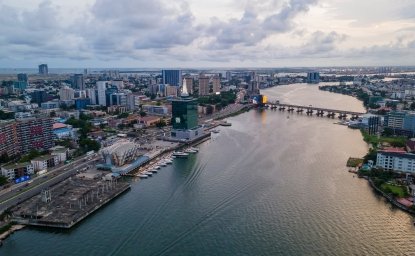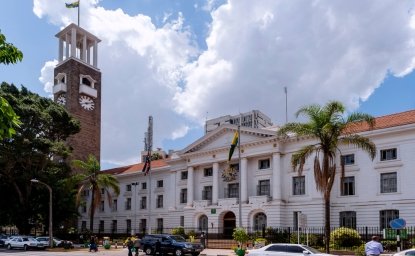With the BRICS Summit completed, it is possible to reflect on the decisions from the Summit and the implications for the future. I have been following the evolving engagement of BRICS since its establishment in 2009, and one of the challenges of the BRICS summits is that the declarations are often extensive, making it time-consuming to filter out the most significant points. After a few days of digesting the Kazan Declaration, I think I can better reflect on the declaration’s implications.
Unlike in 2023, where the group’s expansion dominated the agenda, the 2024 Summit showcased more incremental progress on existing processes. For me, the two highlights this year are a direct continuation of what was decided last year.
Cross-border payment systems and banking coordination
The first highlight is the progress made on the 2023 Johannesburg II Declarations concerning payment systems and the use of local currencies. In 2023, BRICS agreed to task ministers of finance and governors of Central Banks with identifying options for heads of state on how to better trade with local currencies. Rather than making new announcements, at this summit, BRICS presented progress in areas such as the cross-border payment system and the Interbank Coordinating Mechanism while announcing upcoming discussions on cross-border settlement and reinsurance. These efforts align with the New Development Bank’s goal of increasing its loans in local currencies to 30% of its lending portfolio by 2026.
These measures indicate that BRICS is not actively pursuing de-dollarization. Instead, they are creating opportunities to make intra-BRICS trade more attractive by providing options for diversification and reducing exposure to risks inherent in the current international financial architecture.
Who is participating?
The second significant highlight for me was the creation of a new tier of participation – the partner countries. Until this year, the only way for non-BRICS members to engage during the Summit was through the BRICS+ outreach initiative. BRICS+ is an outreach mechanism involving non-BRICS members at the end of formal proceedings. This is similar to how the G7 invites non-member countries to its summits without integrating them into G7-led initiatives. These engagements are usually highly ad hoc and provide limited advantages to those who attend.
The new partner country category will bring in additional countries without full membership. The new category allows partner countries to engage with the BRICS more regularly and benefit from BRICS initiatives. This membership tier reflects a compromise within BRICS, considering ongoing internal divisions between full members on the pace and utility of new expansions. The partner country approach pleased countries like Brazil and the new members (Egypt, Ethiopia, Iran, and the United Arab Emirates), who felt that further expansion would be premature and could dilute the gains of last year’s new member additions. It also pleased countries like Russia and China, which seek a more assertive expansion. South Africa and India seemed ambivalent and would have adapted to any broader consensus within the group.
Expansion and Financial Cooperation
The difference between BRICS+ and partner countries is directly linked, at least in principle, to BRICS’ pursuit of institutionalizing tools that enable members to trade more effectively with one another. While the reform of international financial institutions like the IMF and World Bank remains a core focus for BRICS, these mechanisms—payment systems and interbank cooperation—are now among the primary drivers of discussions within the group. These mechanisms, which are becoming more regular features of the annual BRICS calendar, provide partner countries with opportunities to benefit directly from their results, even if their status means they have a limited say in negotiation and implementation.
For example, think of SWIFT. When it was created in 1973, it only served financial institutions from 15 countries in Europe and North America. Despite certain exceptions such as Russia, SWIFT is almost universal today. However, it remains a Western-led institution even as it has long been perceived as a global common good. Most of the world today benefits from mostly seamless international transactions.
However, many non-Western countries have grown wary of SWIFT’s universality, even before Russia invaded Ukraine in 2022. Lacking influence in decision-making, countries are concerned about its potential use as a political tool.
The risk of relying entirely on SWIFT and the pressure of currency exchange is pushing many non-Western countries to seek an alternative. To many countries, this is a compelling reason to pursue membership or partnership with BRICS. It is not about disengaging from the West—they will continue those engagements. Instead, they seek complementary tools enabling real-time, low-cost transactions in local currencies when trading with other countries—a logical motivation to engage with BRICS partnership.
BRICS will not fundamentally change the global order, but the international order is evolving rapidly, independent of any one informal group.
The discussions on using local currencies within BRICS are directly related. For some countries, like Russia and Iran, these initiatives enable them to engage in international trade more directly, as they have limited or no access to existing systems due to sanctions on their economies. For others, like Brazil, India, China, South Africa, and the new members, it allows them to align with existing pilots or infrastructure being developed in their respective countries. While acronyms like Pix, UPI, CIPS, PayShap, and MiR may not mean much to outsiders, for BRICS countries, these national experiences with instant payment systems will play a central role in implementing decisions that advance intra-BRICS economic integration.
Shift in the world order?
BRICS is often framed as contributing to a shifting world order. However, I do not see BRICS as a threat to the word order. Instead, initiatives like these may help create a more level playing field, where diversity in trade, currencies, and interbank integration provides new layers of competitiveness. At a national level, we know digital tools' design, implementation, and adoption for financial inclusivity are not happening overnight. However, these mechanisms can fundamentally change financial interaction within BRICS and will play a key role in developing inter-BRICS mechanisms.
For African countries, these discussions present significant opportunities. With three full members (Egypt, Ethiopia, and South Africa) and potentially three partner countries (Algeria, Nigeria, and Uganda), there is strong momentum for pushing further for a robust implementation of the Pan-African Payment and Settlement System (PAPPS). Some of Africa’s largest economies now have the opportunity to ensure that PAPPS complements other systems, such as SWIFT and the future BRICS cross-border payment system. By making transactions within and outside Africa cheaper, faster, and interoperable, the continent could gain the competitive edge it has been seeking.
A number of people commented to me that they found the final declaration from this Summit “boring,” and honestly, I am glad it is. This Summit may not have been the most pivotal in BRICS history—I still consider 2023 a more significant turning point—but it was a critical moment to showcase progress and direction. It also demonstrated to outsiders that BRICS is not a threat to the world order but a pragmatic group with tempered decisions that allow members to engage, familiarise, and find common denominators.
Strategic patience is an art in international relations. Both BRICS and non-BRICS members present much hyperbole when describing one another. Perhaps the key lesson is to take these statements with a pinch of salt. BRICS will not fundamentally change the global order, but the international order is evolving rapidly, independent of any one informal group. Nevertheless, BRICS is not irrelevant, and member countries will continue pushing for more democratized global decision-making structures and their own role in them.
Gustavo de Carvalho is an international relations analyst and advisor focused on multilateralism, African governance, diplomacy, and international organizations. He is a Senior Researcher at the African Governance and Diplomacy Programme of the South African Institute of International Affairs (SAIIA).
This blog post was developed based on thoughts originally shared on X. You can find the original thread here.






